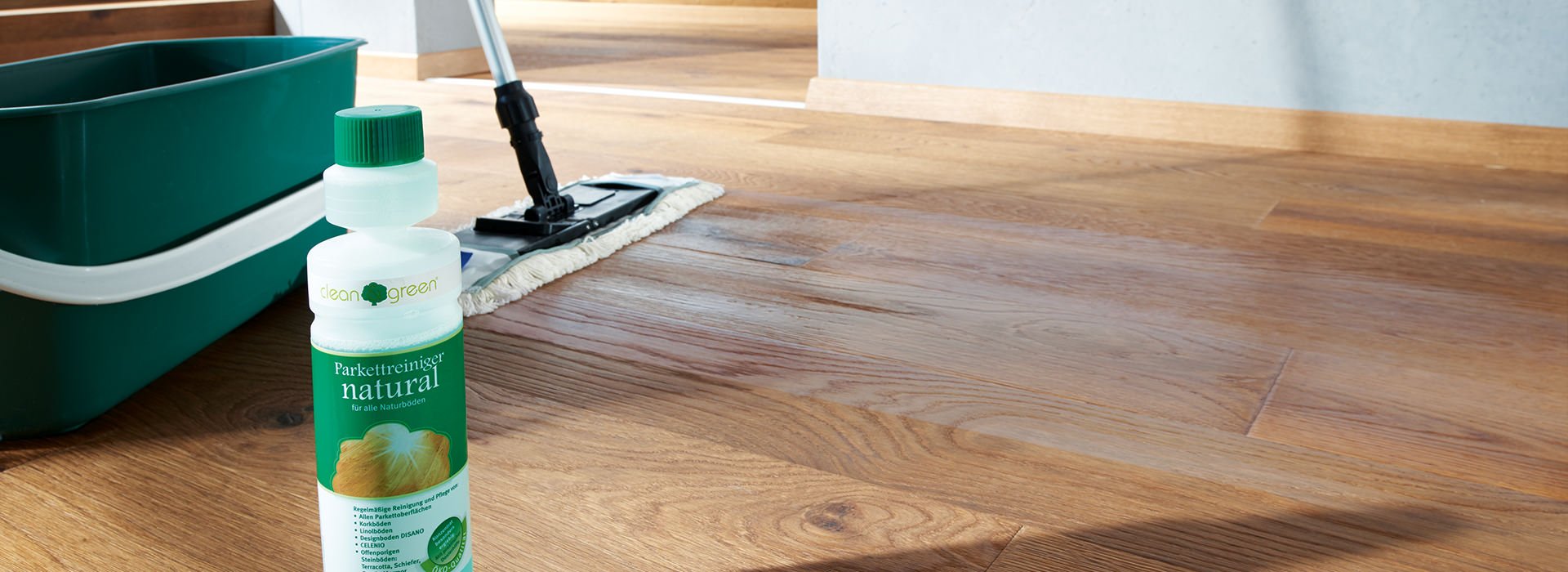Oops, you did it again. Although you mopped the floor immediately after spilling that soda all over, it’s still sticky and gross. Who hasn’t been in such a situation? Sticky floors are irritating, to say the least.
But there’s always a solution. So today we are getting to the root of the problem with sticky floors and coming up with easy solutions because simplicity is the soul of genius.
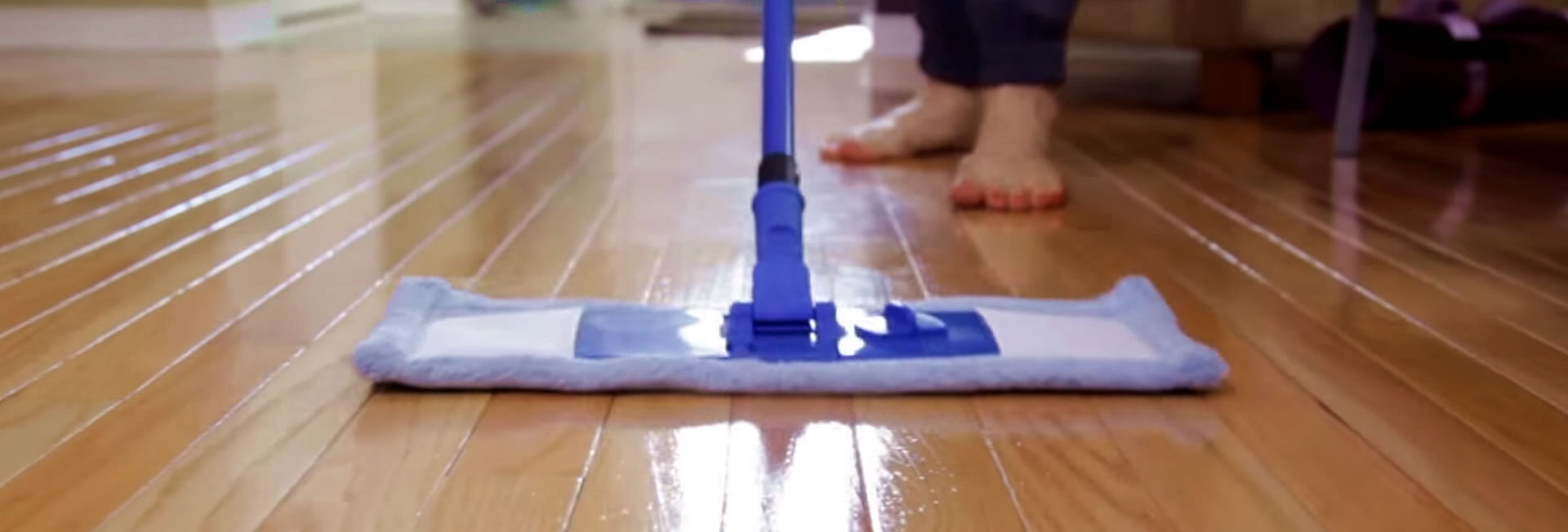
Cleaning sticky floors is not the most fun activity. Unfortunately, if we don’t do it, the consequences will be even more unpleasant. The sticky floor will attract dust and dirt, and the whole area will look horrible.
So, our approach will be to identify the cause, find the best tools, and develop a road map. Then, at last, we’ll talk about prophylaxis. Let’s do it.
Sticky floor. Cause of disaster
Whatever you have done, and the possibilities are endless, the result is a sticky floor. And that is after you mopped it. Why didn’t mopping work? There are several major options.
A lot is not always good. Too much cleaning solution
Maybe you are just like us, and when adding the cleaning solution to the bucket with water to clean the floor, you skip the measuring part and just pour some amount that ‘looks right’.
Let us be honest: it doesn’t always work. And don’t think about your mother or Nana, who never used measuring cups in the kitchen.
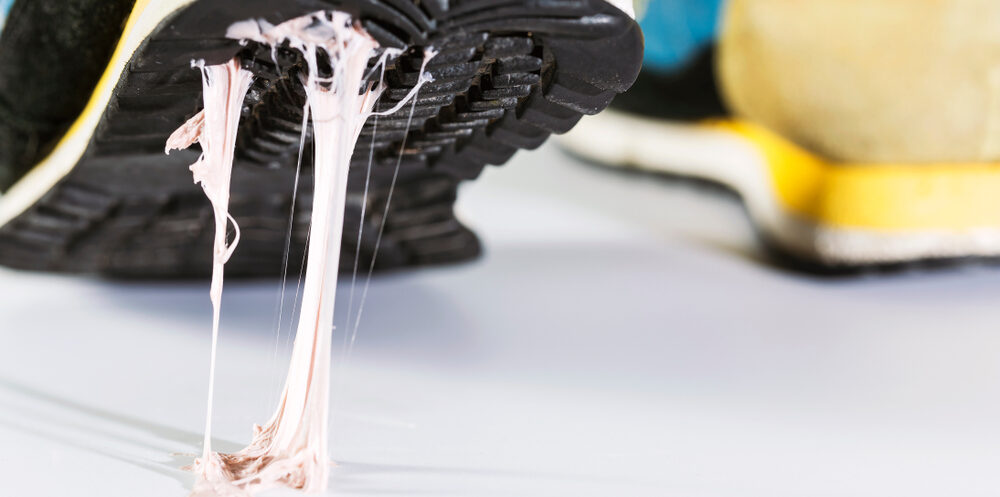
There is a huge possibility that you use too many cleaning solutions. The result? — Sticky floors.
Try to avoid that by gauging the amount of cleaning solution correctly, doing it in the most traditional way — with the help of a measuring cup. More often than not, they even come together with a cleaning solution.
A cleaning solution is not always all-purpose
First, the floors are different. They can be made of or covered with various materials: hardwood, laminate, linoleum, tiles, stone, vinyl, etc. And for each floor, there is a specific cleaning solution available at the market. That’s understandable, as all these materials have different textures and characteristics.
If in the living room, you have a beautiful hardwood floor, in the kitchen — tile flooring, and on the patio — stones, you most likely will need to change cleaning solutions because with hardwood floors, for example, you must be really careful its cleaning solution will be milder than the solutions for tiles or stone.
If you try to clean your hardwood floor with the cleaning agent for tiles, it probably won’t work and most likely will damage the wood.
Another important moment here is that the stains are different too. The cleansing agent, which is effective at removing sticky residue left by oily substances, won’t be effective against alkaline. That’s why it’s critical to know what caused the sticky residue.
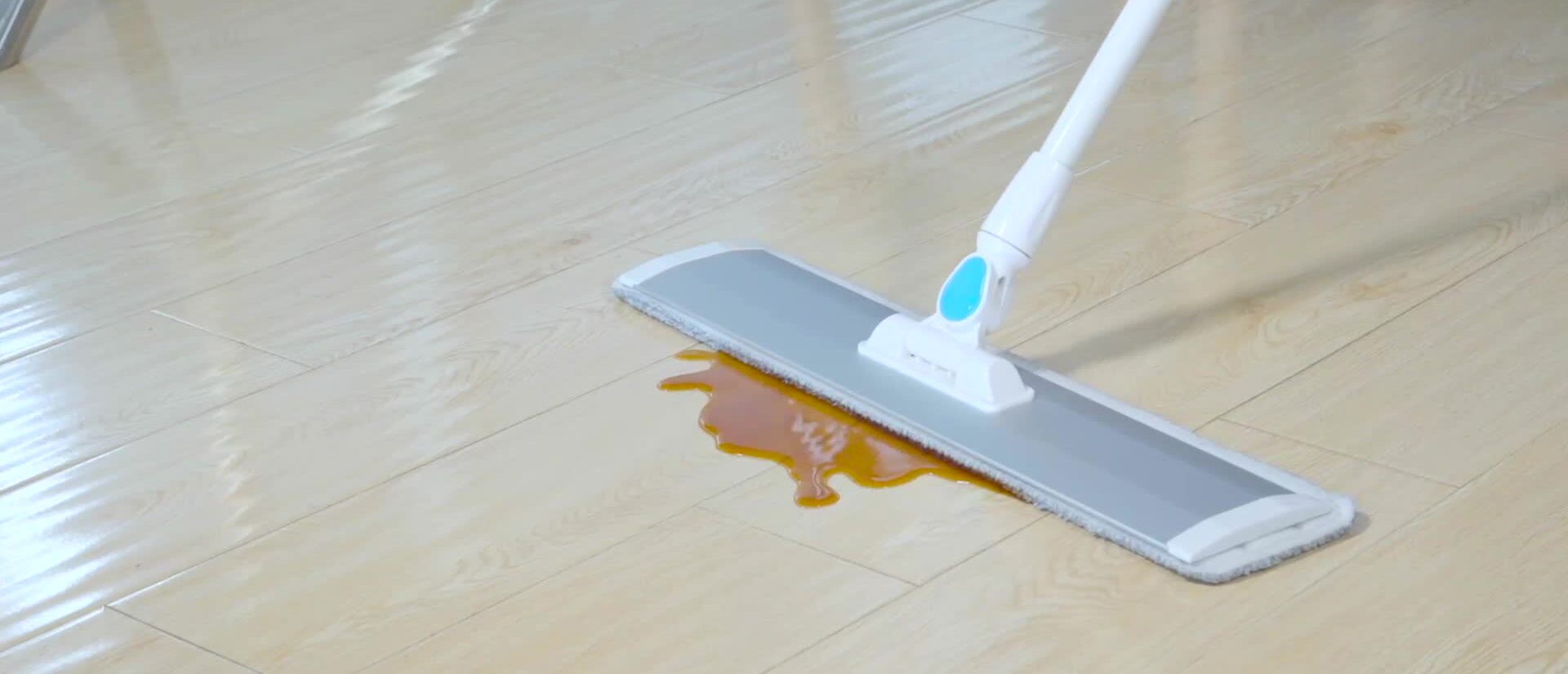
For stains or dirt of an alkaline nature, use acid-based cleaning agents, whereas if the stains have acidic components, your choice should be an alkaline-based cleanser.
Dirty water is not the best cleanser
Cleaning floors isn’t a walk in the park. It’s tedious and tiring work. And sometimes, especially with a big house, we don’t change the water in the bucket often enough.
Instead of cleaning the floor, we spread the dirt all over the house. Dirty water doesn’t clean.
The result? — Sticky floors and sticky residue around the house. Nobody wants that. Therefore, we have to push through and change this bucket every time we notice dirty water in it. To make it easier, just change the water after every room, and you’ll be fine.
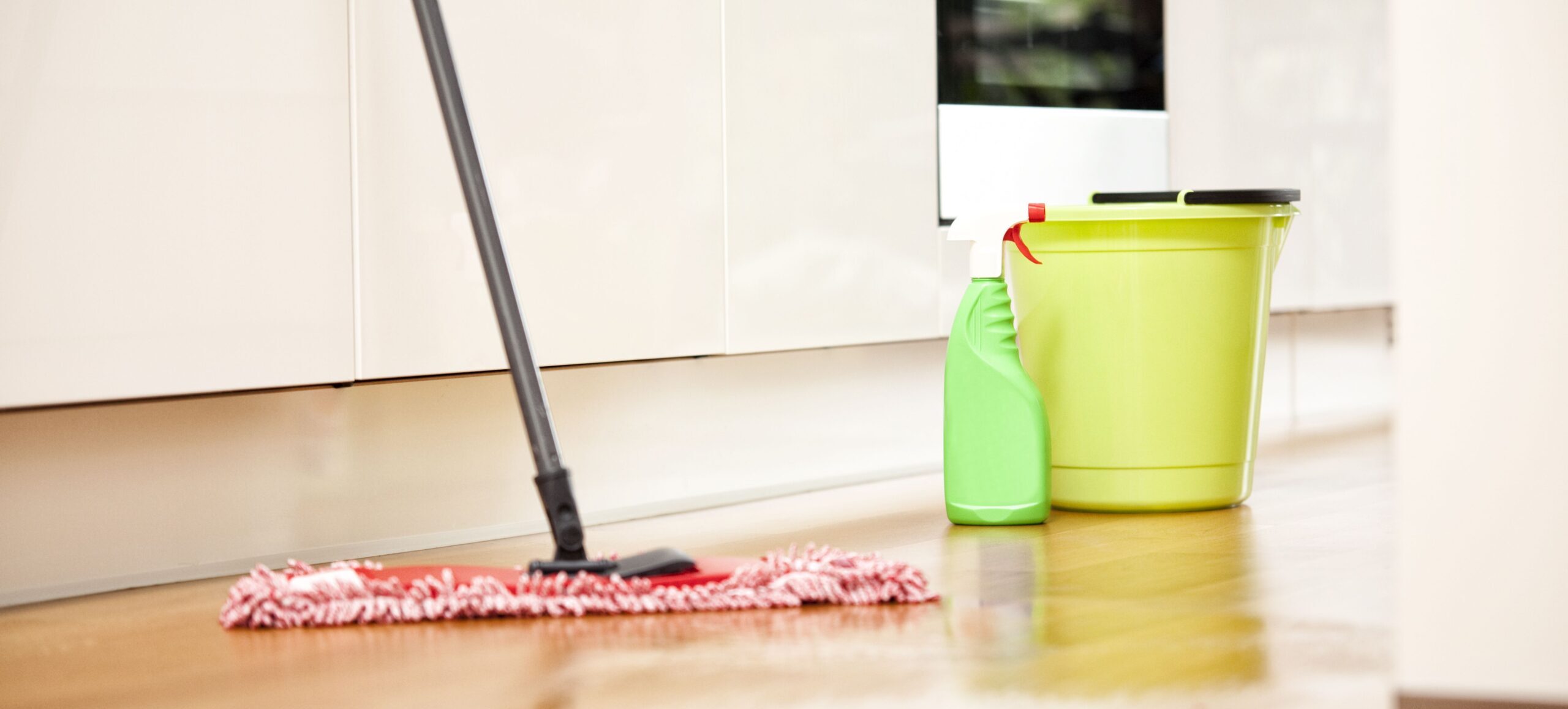
Microfiber is a material that effectively absorbs dust and dirt. If you use a microfiber mop, it will prevent dirt from going into the water.
Rinsing is not the step to be skipped
In case, there’s an excess solution on the floor after cleaning, it will most likely leave a sticky residue afterward. If you don’t want to clean sticky floors later, rinse them with a fresh bucket of clear water. Use a microfiber mop to maximize the effect.
Best and easiest solutions to clean sticky floors
To tackle the problem of sticky floors, we are giving you seven simple solutions that are very effective and won’t require too much effort.
Steam mops — super assistants
A steam mop is a brilliant solution if you need to clean sticky floors. This baby is fantastic. No cleaning chemicals are needed, only steam.
Steam mops are great, especially for people with severe allergies who can’t stand floor cleaners and similar solutions.
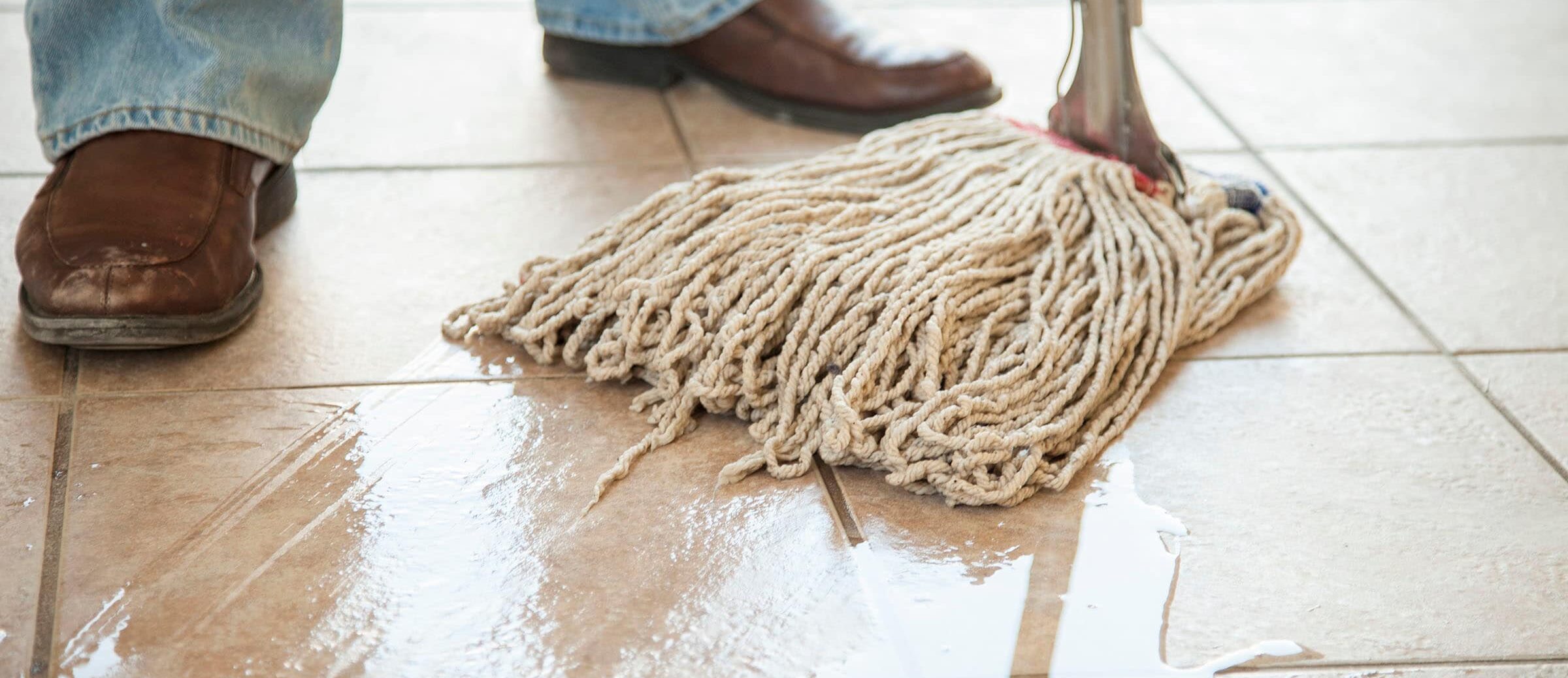
Steam mops save a lot of time and effort for the owners. And they are efficient at their job — they clean sticky, dirty floors and remove sticky residue.
Unfortunately, there is a ‘but’ here. Steam mops are not applicable for hardwood floors. The steam generated by the steam mop can damage the gentler material of the hardwood. Laminate floors or tiles, on the other hand, will be fine.
White vinegar — to the rescue
White vinegar is a fantastic product. It has multiple applications in our households, including all kinds of cleaning. It will help you deal with sticky floors as well.
The proportion is 0.5 cups of white vinegar per 1 gallon of warm water. Pour it into the bucket and use a traditional mop or spray it on the sticky floor surface.
But be warned: wood floors and especially hardwood floors are not safe from vinegar. Otherwise, it’s an effective and inexpensive cleanser.
Dishwashing soap — new application
We love products with multiple applications. It’s especially fun to discover such new applications ourselves.
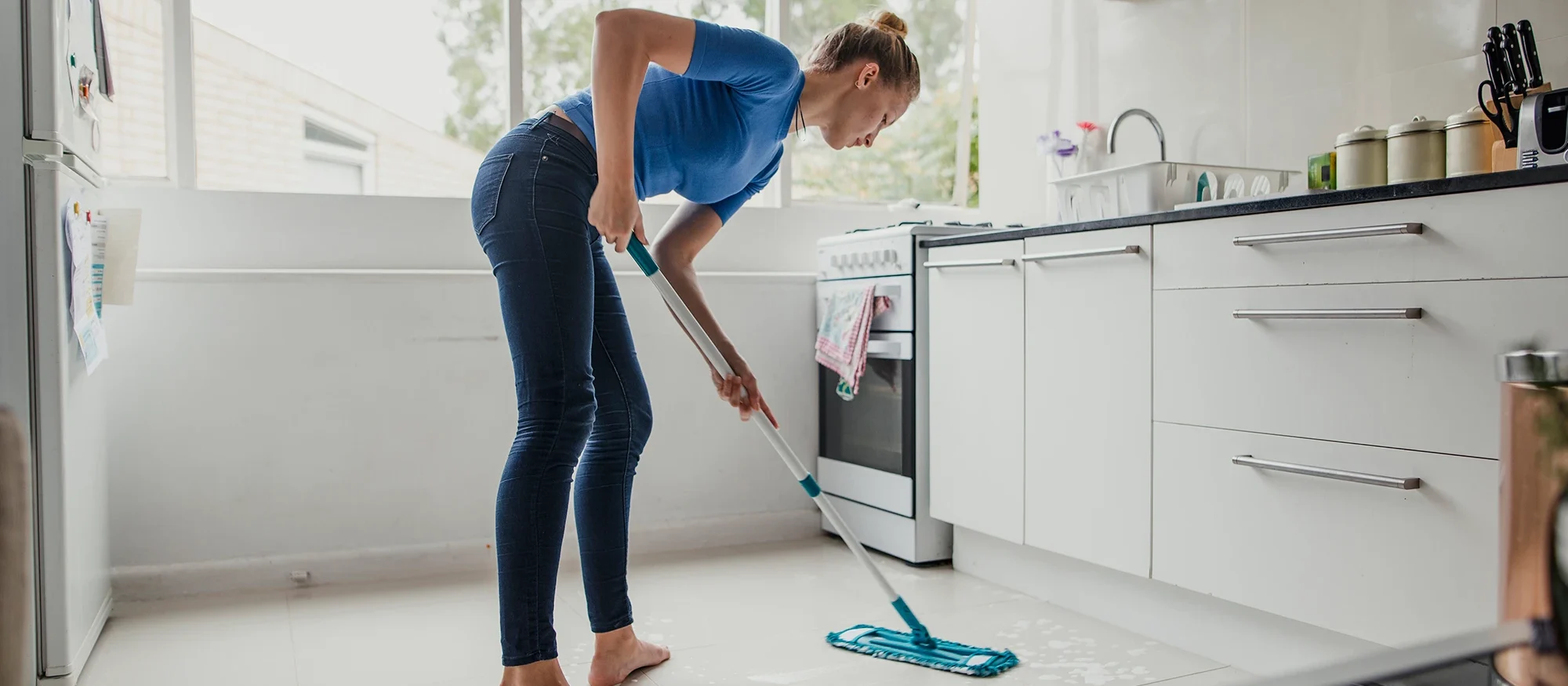
So take a pH-neutral, concentrated dish soap, dissolve it in tepid water, and use it as a floor cleaner for removing sticky residue. We recommend using a vegan product for that.
This floor cleaner is safe to use on hardwood flooring. Laminate floors and tiles will work fine too.
Ammonium chloride — a miracle cleaner
One more great household assistant and cleaning agent with different applications all throughout the house. Including sticky floors.
The proportion is 3/4 cup of plain household ammonium chloride per 1 gallon of warm water. It’s a very effective sticky residue remover for all types of non-wooden flooring.
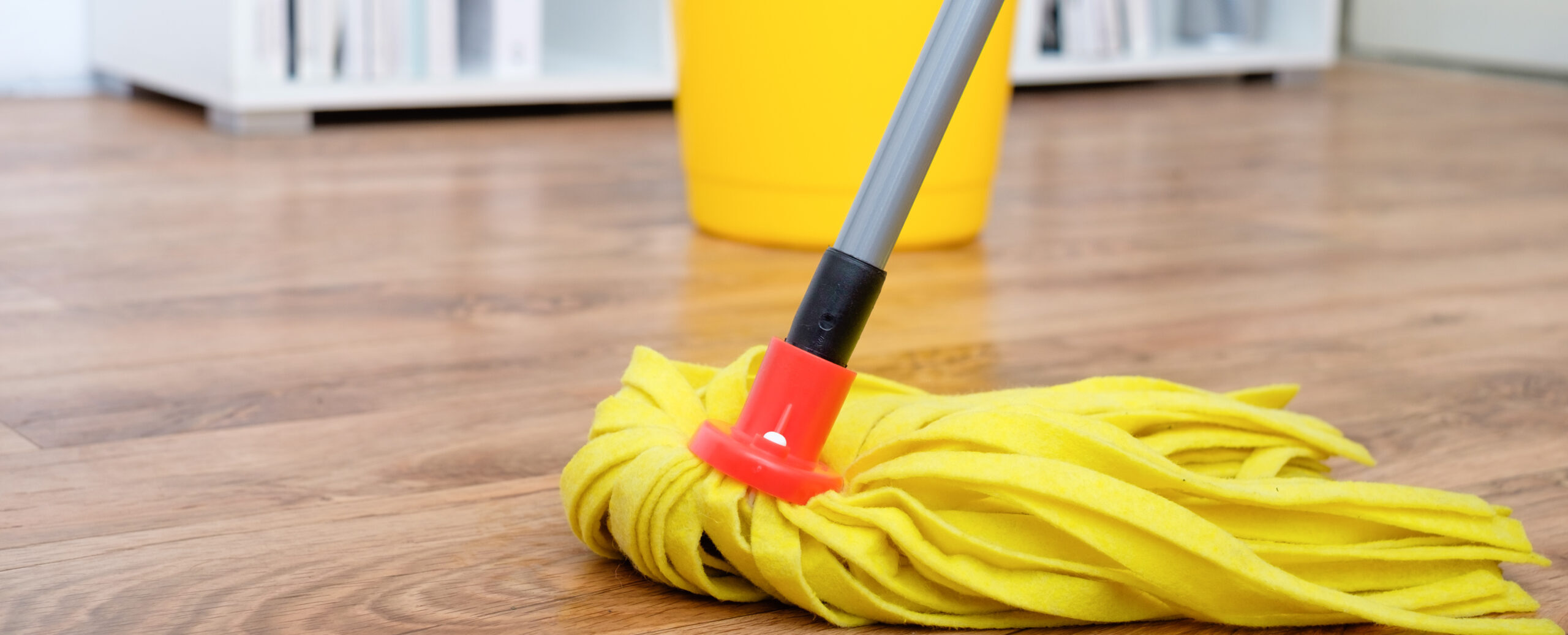
Don’t use it on wooden floors, it can damage them.
Non-residue cleaner. A perfect solution?
These floor cleaners are specially designed to leave no residue. Which is good. You can find these cleaners available for different types of flooring. Plant-based options are also available.
Sodium carbonate/baking soda — natural cleaners
Both products are great cleaners, and not only for the floors. They both offer effective solutions for sticky floors caused by acid. They are mild, non-toxic, and very effective.
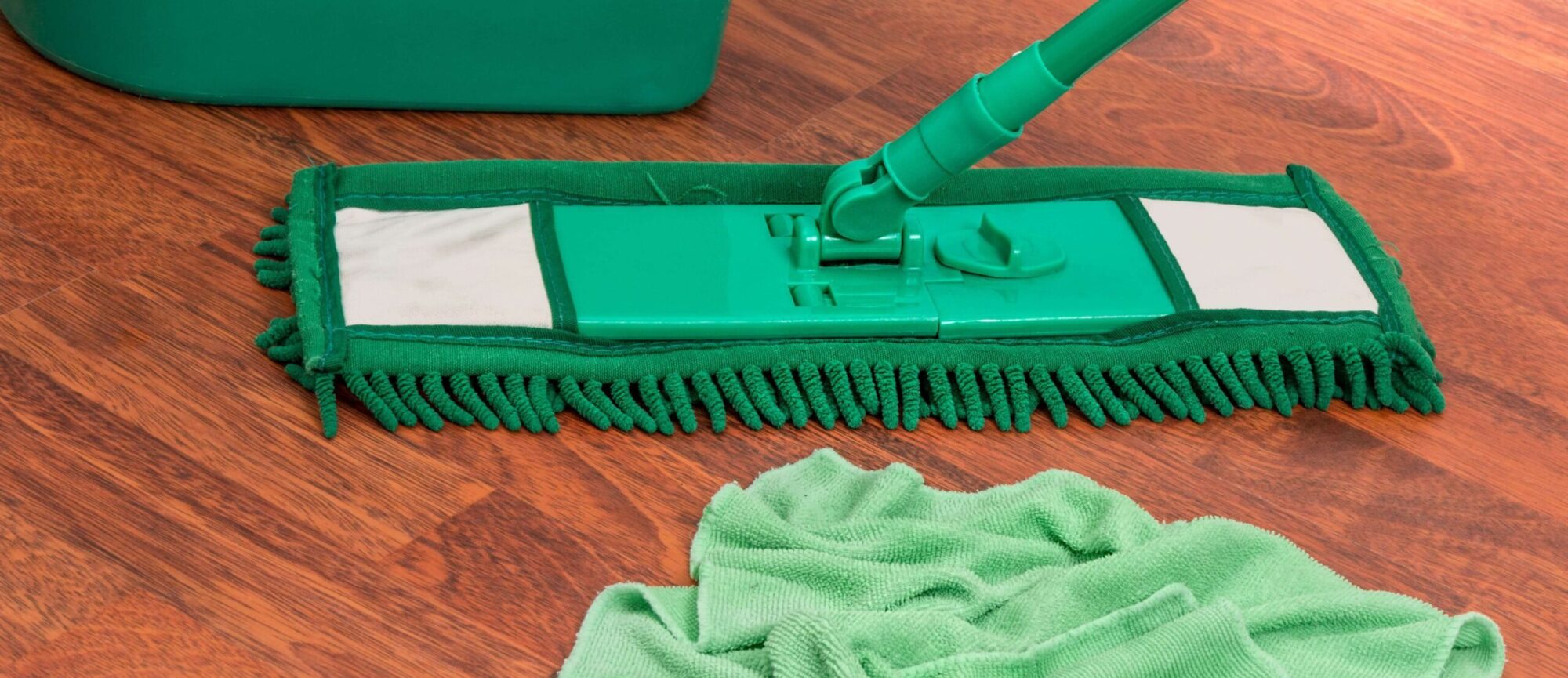
The good news is — sodium carbonate (or washing soda) and baking soda are applicable for wood floors, including hardwood.
The proportion is 1 cup of sodium carbonate/baking soda per 2 gallons of hot water. Use a traditional mop and apply the solution. Let it stay for a couple of minutes, then rinse it off with water.
One extra perk: both products are ecological.
To be on the safe side, we always recommend before using any new floor cleaner, check it on a small, discrete area.
Clean your sticky floor. Instruction manual
Now let’s get strategic and fight sticky floors in the most efficient way. To the win.
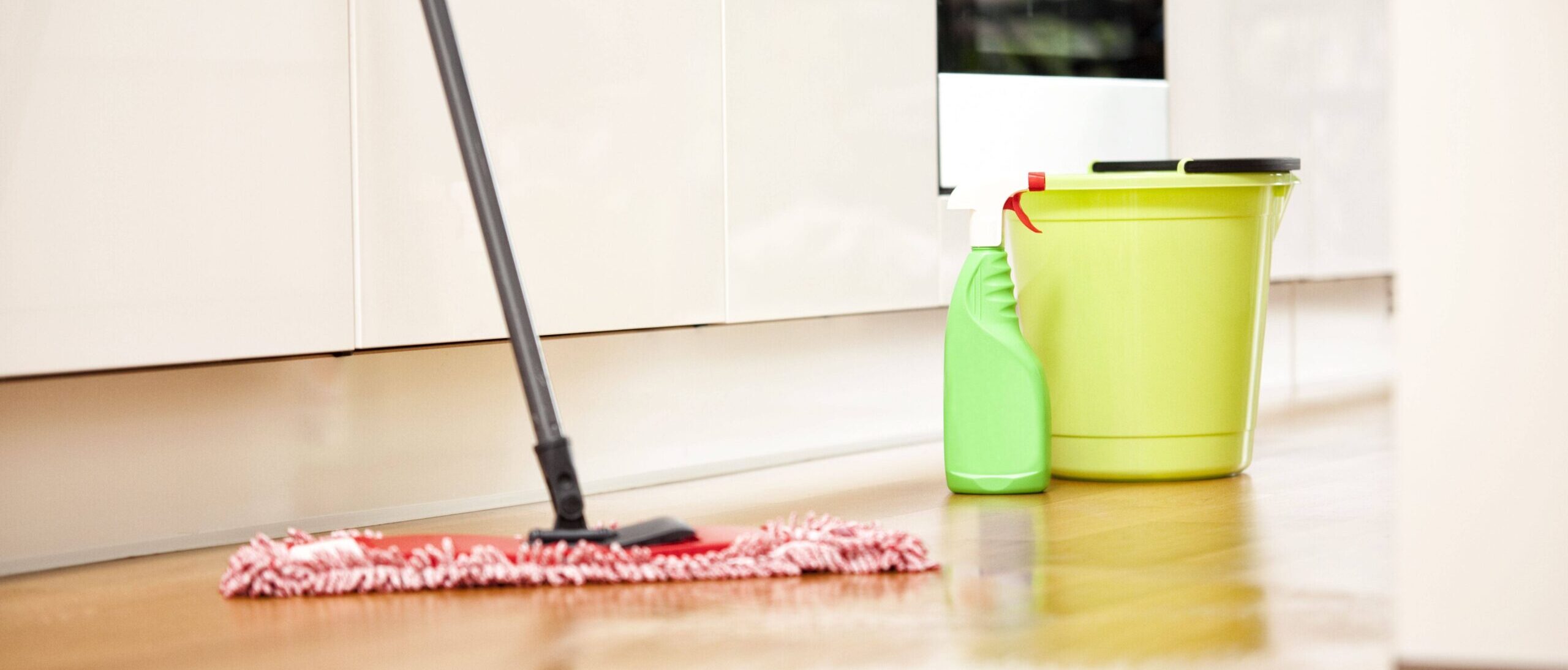
Arm yourself fully. A good clean mop and a bucket are your weapons.
Bucket, water, and cleaner. A bucket of warm water and the cleaner intended for your floor. Make sure that you don’t use too much cleaning solution.
Soak, wring out, and mop. When you mop the floor, don’t forget to rinse the mob regularly and change the dirty water.
Rinse it to the max. After cleaning, rinse the surface with clear water and a clean mop, then check that you haven’t left any part of the floor sticky after mopping.
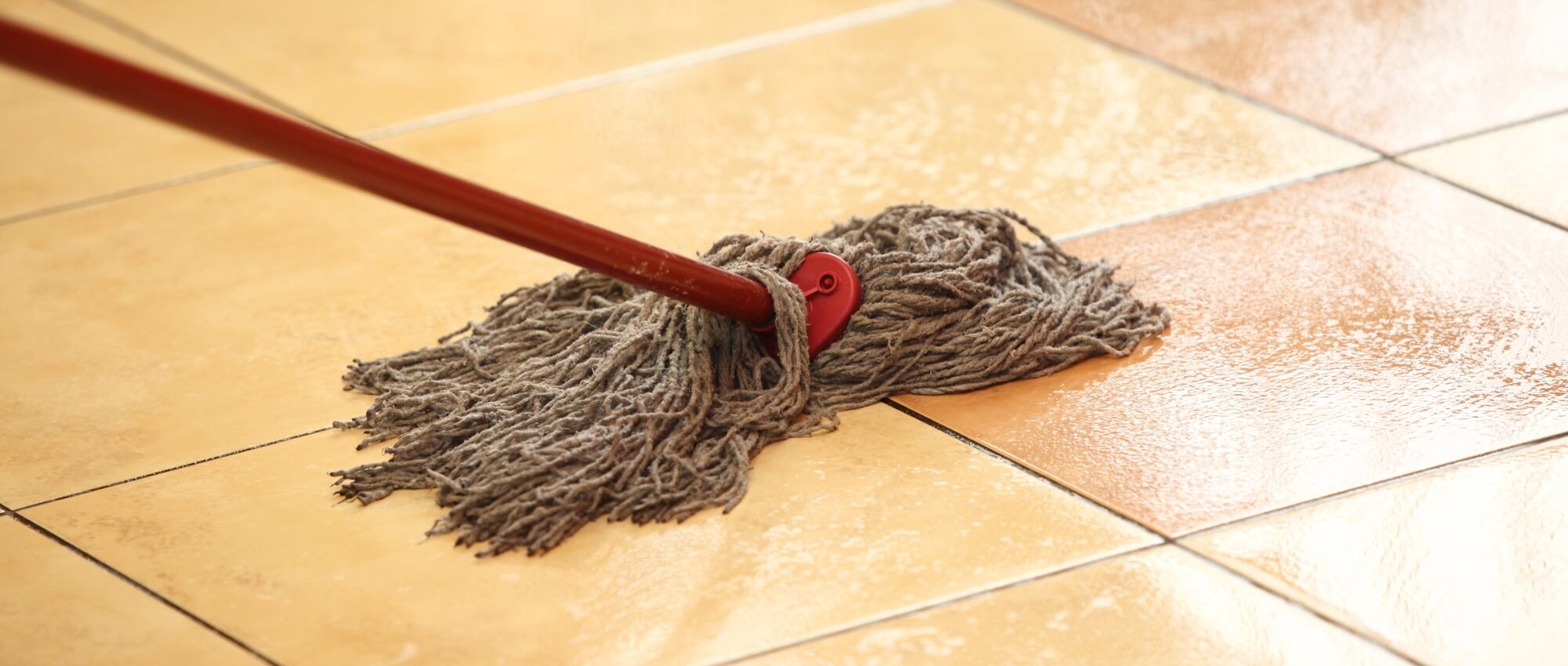
Dry it well. Drying the floor with microfiber is fast and easy. If you don’t have a microfiber mop, use any soft cloth to do it. Or just leave the surface dry naturally. It doesn’t take long.
Easier to prevent than to treat
Preventing an issue is usually a better way than tackling a problem already on your hands. That’s why a few pieces of advice in this regard.
- Keep your home clean. Don’t let dust and dirt accumulate and create sticky areas (don’t let those dust bunnies run around.)
- If something did go wrong, and now your floor feels sticky, don’t waste any time. The sooner you tackle the problem, the easier it will be.
Conclusion
We all love our homes. And almost all of us care about keeping it clean and tidy.
But we are all humans, and things happen. If your floor got sticky for some reason, don’t panic. It’s not a big deal. In our article, we tried to equip you with multiple solutions to the issue.
You can read even more tips here How to clean sticky floors: interesting and effective tips.
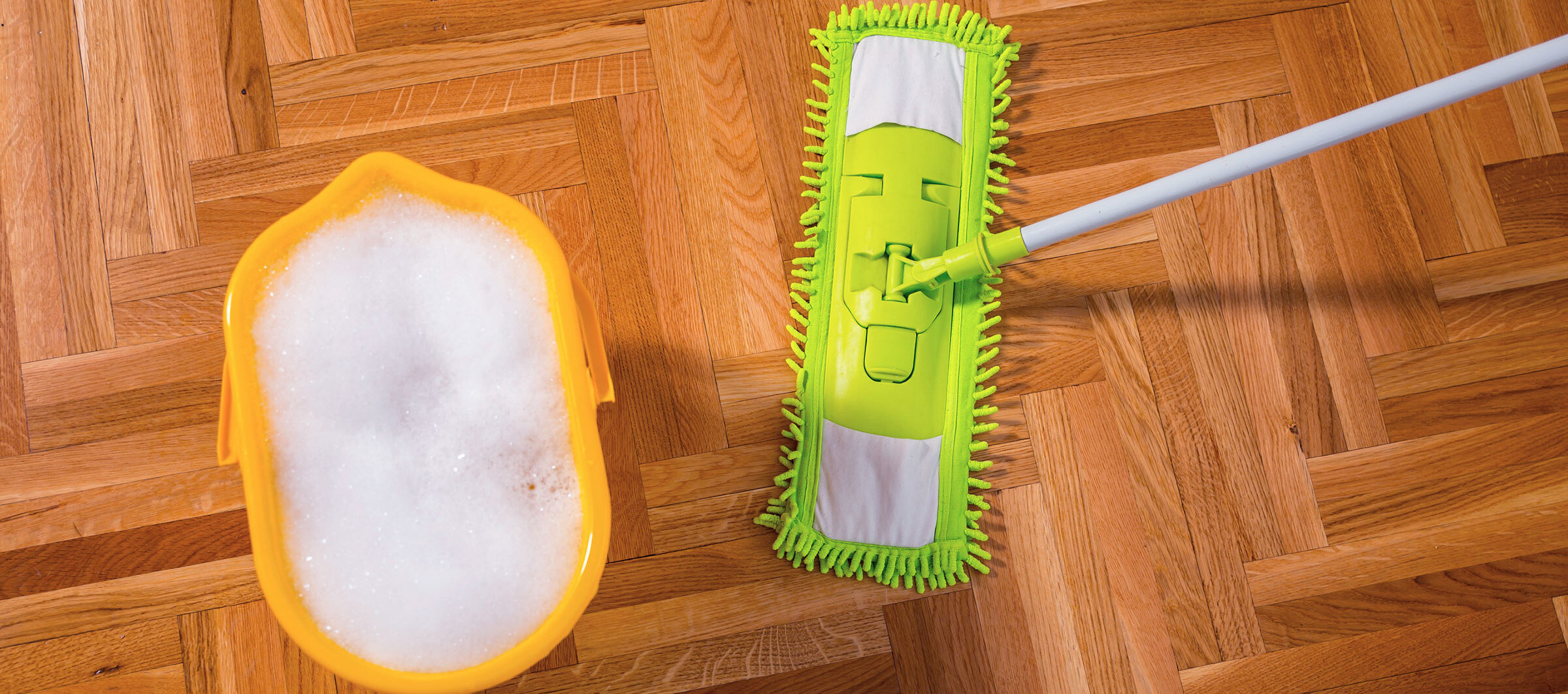
But remember the most important thing: every type of floor requires its cleaner, designed especially to clean such a floor. There is no universal solution here. Only the individual approach.
The same applies to stains and sticky residues.
They are different and require different plans of action. And although it would be nice to have a one-for-all solution, life is a little more complex.
In our article, we provided you with all the information you may need to solve the problem of stickiness and always enjoy clean shining beautiful floors.
Frequently asked questions
Why is my floor still sticky after I mop?
It can happen for several reasons:
- You used the wrong cleaner. Every type of floor has its own special solution. If you use the wrong floor cleaning solution, the cleaning process won’t be effective.
- You used too much cleaner. With the excessive amount of cleaner, the floor will be sticky after you mop it.
- You cleaned with dirty water. Changing the water is important. If you don’t do it often enough, dirty water won’t clean your floors. It will do the opposite. And the floor will be sticky after mopping.
- You haven’t rinsed off the floor cleanser. It remained on the floor and caused stickiness.
Does vinegar clean sticky floors?
White vinegar is a very effective cleanser for a lot of different things, floors included.
Take 0.5 cups of vinegar, add it to one gallon of tepid water, and apply to the floor.
But beware: don’t use vinegar on wood floors, especially on hardwood flooring. It can cause damage.
How do you remove sticky residue from the floor?
One of the greatest solutions is using a steam mop. A steam mop will help you get rid of sticky residues easily. You can also try such multipurpose products as white vinegar, ammonia, washing and baking soda, and dish soap. But before doing that, check if you can use it on your floor type.
What is the best way to clean sticky hardwood floors?
Hardwood flooring is beautiful and expensive. Sometimes it even has historic value. Therefore, cleaning should be very delicate. And our recommendation is to try to avoid sticky hardwood floors altogether. In this case, prevention is significant.
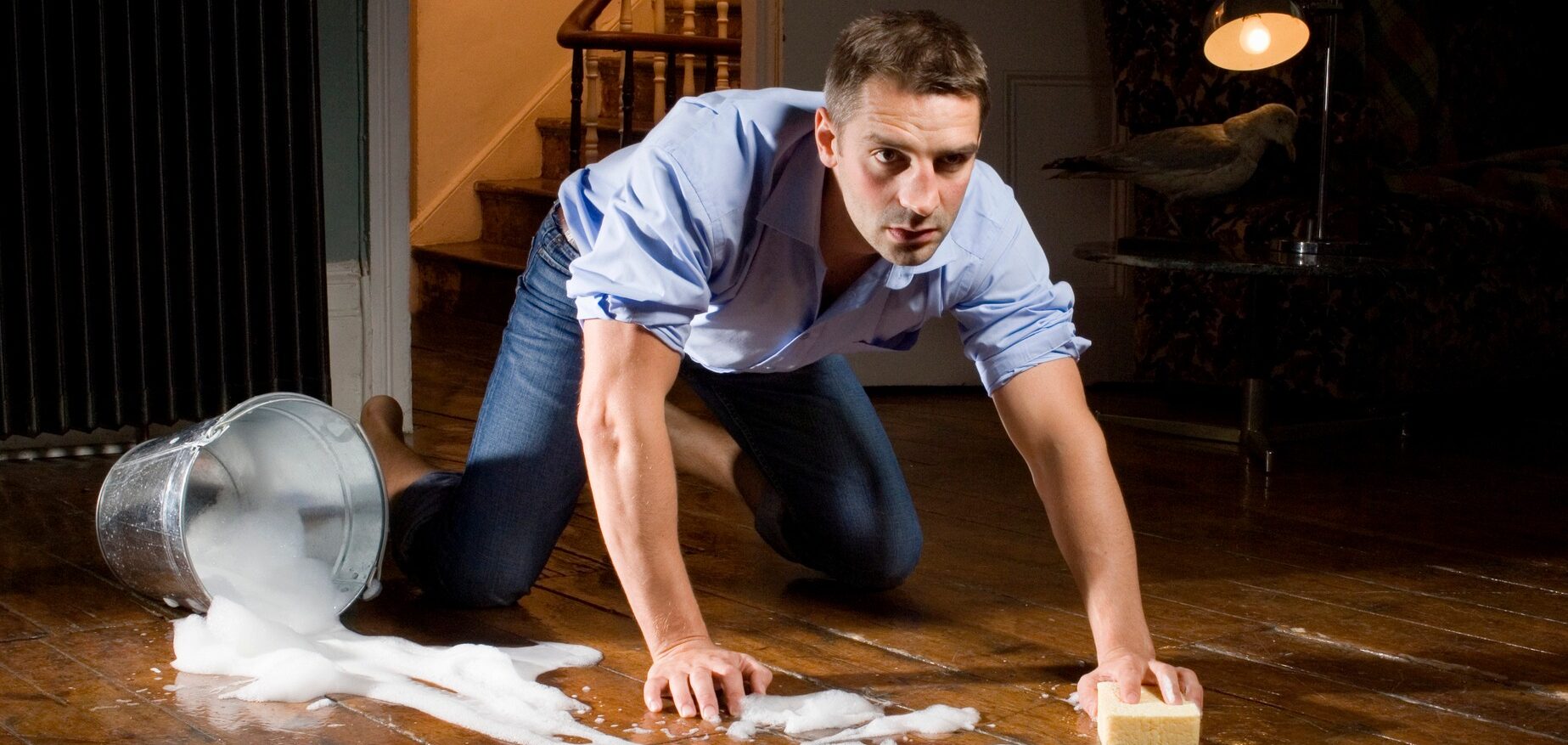
If something did happen, use the floor cleaner designed especially for hardwood floors. Be careful measuring the amount of the cleanser, as too much of it will make the floor even stickier. Don’t use hard abrasive materials that can damage hardwood.
After cleaning, dry the hardwood with microfiber or another soft cloth.
If you want to try some new product, test it in a discreet spot before applying.

